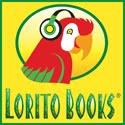Selected by Alma Flor Ada and F. Isabel Campoy
English versions by Rosalma Zubizarreta
Illustrated by Viví Escrivá
The LBBC’s recommendation for June’s Libro del Mes, is ¡Muu, Moo! Rimas de animales, Animal Nursery Rhymes selected by Alma Flor Ada and F. Isabel Campoy.
This month, the LBBC will be celebrating nursery rhymes and folktales. For most of us, these were the first stories we learned and I would bet the majority of you still remember them. In Latin America, nursery rhymes can be unique to a particular country, but most are universal throughout the Spanish-speaking world. These folktales are the rhythm and song of our cultural spirit and our children should be spoon-fed each one to nourish their cultural identities. As parents, we must start early to create positive, happy associations with our Latino heritage to combat much of what the world will tell them as they grow.
Just a few years ago, Latino folklore and nursery rhymes were only available by word-of-mouth. Today, we are lucky to have a growing number of authors and illustrators working to document these precious tales for future generations to enjoy. So it is fitting, then, that our Libro del Mes be the latest release from two of the leading authors dedicated to capturing the stories of our Latino childhoods.
Alma Flor Ada and F. Isabel Campoy have produced an incredible amount of books for the Latino children’s market. They are consummate storytellers with what seems like an endless number of tales to tell. In ¡Muu, Moo! Rimas de animales, Animal Nursery Rhymes the authors once again team up with artist Viví Escrivá to bring you a classic collection of poems and stories for children. ¡Muu, Moo! quickly brings to mind one of their previous collaborations, ¡Pio Peep! Rimas tradicionales en Español, Traditional Spanish Nursery Rhymes. This latest release contains 16 rhymes from Spain and Latin America with full text in both English and Spanish. I appreciate the fact, however, that the English versions are not literal translations, but rather poetic renditions that reflect the essence of the Spanish original. For example, here is one of the shorter rhymes in the book, Primavera…
En el prado el caracol
saca los cuernos al sol.
Como premio, el girasol
Le da un beso al caracol.
La abejita presurosa
Saluda a la flor preciosa.
¡Qué promesa, la primavera
mañana de primavera!
A tiny snail is winding along,
Stretching his feelers toward the sun.
When she sees the snail in bliss,
A sunflower leans over to give him a kiss.
A busy bee joins in the play,
Buzzing over to say, “Good day!”
Oh, what delights a day can bring
On this very first morning of Spring!
I was also touched by the introduction, where the authors state that “for Latino children, this book is offered as a bridge between their own childhood and that of their ancestors. To bear good fruits, we need strong roots.” What a blessing it is that we now have the opportunity to share such beautiful words, thoughts and images with our children. I hope that you, dear reader, take advantage of the many books now available to help your children establish their “strong roots.”
Escrivá’s illustrations bring to life the softness and innocence of childhood. Her distinctive work subtly captures the feeling of the Latino culture through the thoughtful details she gives to clothing, architecture, home décor, and landscape.
This book is a perfect addition to any bilingual family’s library. Both English speakers and Spanish ones will delight in the subject matter and the joyful illustrations. If you would like to buy your own copy of ¡Muu, Moo!, please click here. Or you can follow the link in our sidebar to the LBBC’s on-line store. We have both new and gently used copies available.

















0 comments:
Post a Comment